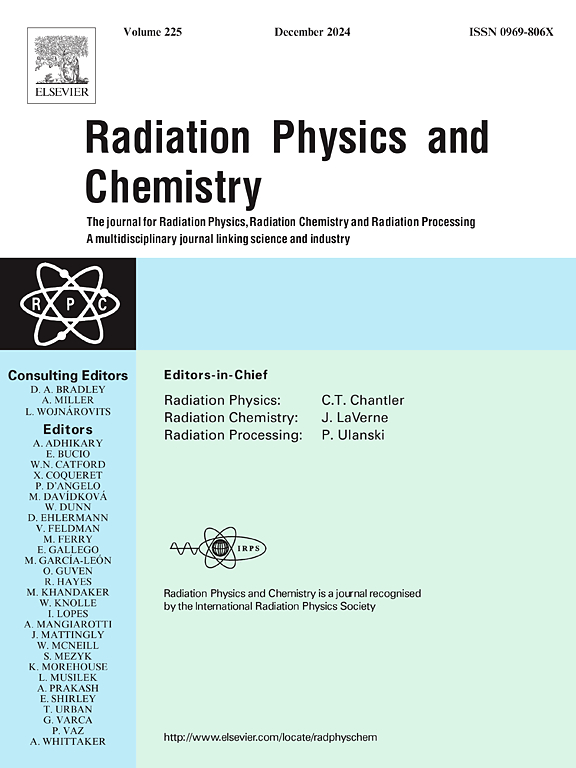Thermoluminescent dosimeters (TLD-100 and GR-200) calibration for dose verification in radiotherapy: Different photon and electron energies
IF 2.8
3区 物理与天体物理
Q3 CHEMISTRY, PHYSICAL
引用次数: 0
Abstract
Radiotherapy is a local treatment, so it is necessary to know the dose delivered and absorbed in the organs at risk and the target volumes. There are several types of radiation dosimetry measurements. Thermoluminescent Dosimeters (TLDs) are suitable for performing measurements on patients or phantoms due to their small size. TLD-100 and GR-200 are the most important types of TLD used in radiation dosimetry. This study aimed to determine the dependence of the TLD-100 and GR-200 doses on the energy and type of radiation. To investigate the effect of energy on the response of TLD-100 and GR-200, calibration was performed with electron beams of 6, 8, 10, and 15 MeV and photon beams of 6, 10, and 18 MV, delivering doses of 30, 50, 70, and 100 cGy. Energy-dependence curves were then plotted for different TLD doses. TLDs calibrated with electron and photon were significantly different at various doses and energies, then the regression values (R2) and the ratio of the standard deviation to the average values were calculated by drawing the calibration curve for TLD-100 and GR-200. The obtained results showed that the calibration curves in the dose range of 0–100 cGy for TLD-100 were more linear than those for GR-200, making TLD-100 better suited for dosimetry applications.
求助全文
约1分钟内获得全文
求助全文
来源期刊

Radiation Physics and Chemistry
化学-核科学技术
CiteScore
5.60
自引率
17.20%
发文量
574
审稿时长
12 weeks
期刊介绍:
Radiation Physics and Chemistry is a multidisciplinary journal that provides a medium for publication of substantial and original papers, reviews, and short communications which focus on research and developments involving ionizing radiation in radiation physics, radiation chemistry and radiation processing.
The journal aims to publish papers with significance to an international audience, containing substantial novelty and scientific impact. The Editors reserve the rights to reject, with or without external review, papers that do not meet these criteria. This could include papers that are very similar to previous publications, only with changed target substrates, employed materials, analyzed sites and experimental methods, report results without presenting new insights and/or hypothesis testing, or do not focus on the radiation effects.
 求助内容:
求助内容: 应助结果提醒方式:
应助结果提醒方式:


